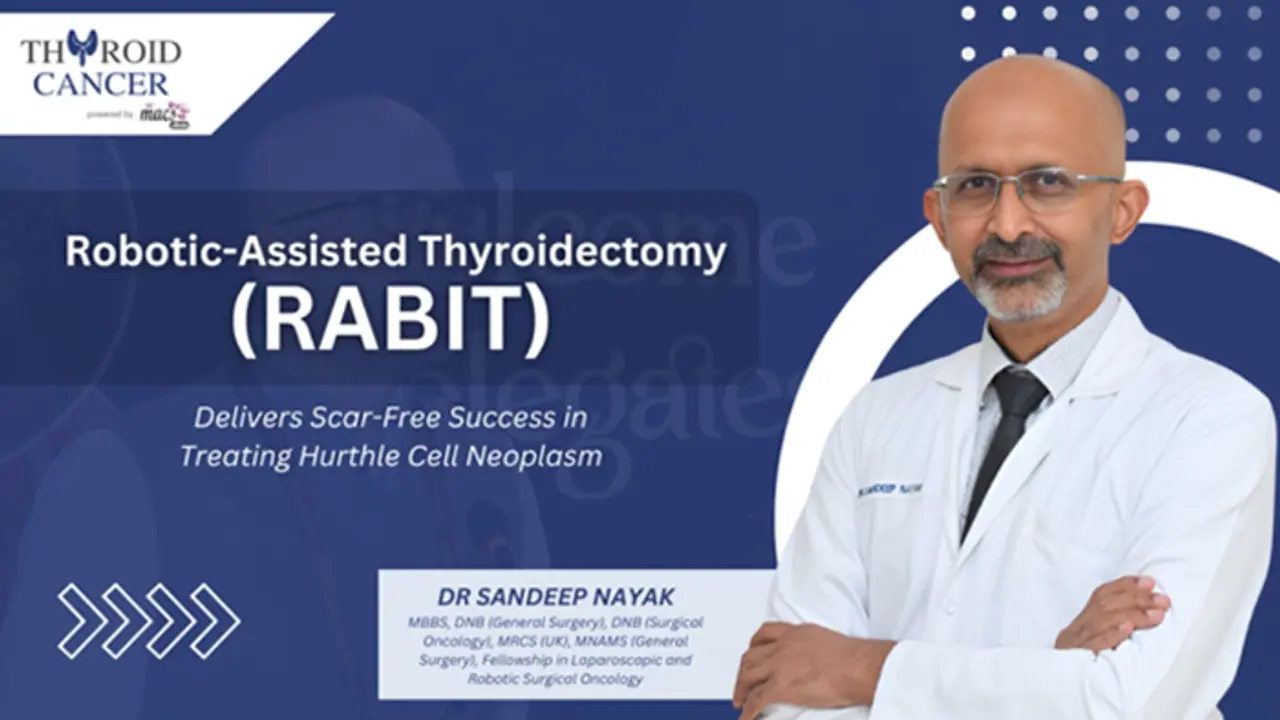The diagnosis of Hurthle cell neoplasm caused significant concern for the patient’s family, who were eager to find a surgical option that avoided visible scarring.
Bengaluru (Karnataka) [India] September 24: A 19-year-old woman recently noticed swelling on the left side of her neck, prompting concern. After a thorough evaluation, she was diagnosed with Hurthle cell neoplasm, a type of thyroid tumour that can be challenging to classify as benign or malignant without surgical intervention. Worried about potential visible scarring from traditional thyroid surgery, the patient and her family sought a solution that would minimize the aesthetic impact while ensuring effective treatment.
The diagnosis of Hurthle cell neoplasm caused significant concern for the patient’s family, who were eager to find a surgical option that avoided visible scarring. They reached out to Dr. Sandeep Nayak, a leading expert in thyroid surgery, to explore alternatives. After discussing their options, they decided on robotic-assisted thyroid cancer treatment, specifically the Robotic-Assisted Breast-Axillo Insufflation Thyroidectomy (RABIT) technique. This advanced approach allows for a scar-free solution, addressing both the medical and cosmetic needs of the patient.
Dr. Nayak explained the numerous benefits of robotic surgery, which include enhanced precision, reduced scarring, better voice quality preservation and a quicker recovery period. Unlike traditional open thyroidectomy, where a significant neck incision is required, the RABIT technique allows for minimal access surgery using small incisions in the breast-axillo region. This method not only improves cosmetic outcomes but also enhances the surgeon's ability to precisely navigate sensitive areas around the thyroid, reducing the risk of damage to critical structures such as nerves and blood vessels. The use of the da Vinci robotic system further allows for superior three-dimensional visualization and greater dexterity compared to standard laparoscopic tools.
Patients often express concerns about recovery times, visible scarring, and potential complications when undergoing thyroid surgery. Robotic-assisted thyroidectomy addresses many of these concerns by offering less invasive surgery with smaller incisions, which translates to faster healing, reduced pain, and an overall more comfortable recovery experience. In this case, the young patient underwent a total thyroidectomy at the end of July using the RABIT approach. This method ensured the complete removal of the thyroid gland without any visible scarring on the neck, thus preserving the patient’s aesthetic appearance. In addition, the precision of the robotic system allowed for a safer procedure with minimized risk of complications.
Robotic-assisted surgeries are also gaining popularity due to their ability to offer faster recovery times compared to traditional open procedures. Patients undergoing robotic thyroid surgery, like this 19-year-old woman, often experience reduced postoperative pain and are able to return to their normal activities sooner. The shorter recovery period also contributes to improved overall patient satisfaction, as it enables them to resume daily life without the prolonged discomfort often associated with conventional surgery. In this case, the patient recovered smoothly with no complications and was pleased with the scar-free result.
This case illustrates the advantages of robotic-assisted thyroidectomy, particularly for patients like this 19-year-old who were concerned about scarring and body image. The RABIT technique proved to be an effective thyroid cancer treatment, offering an alternative to traditional surgery without compromising on medical results. Patients undergoing this innovative method can not only expect precise removal of thyroid tumours but also benefit from improved cosmetic outcomes. By preserving their physical appearance and ensuring a quicker, less painful recovery, robotic surgery significantly enhances the quality of life for thyroid cancer patients.
The broader implications of robotic surgery in thyroid cancer treatment are clear. As more patients become aware of the benefits of minimally invasive approaches, the demand for such advanced techniques is expected to rise. For surgeons, robotic systems offer unparalleled precision, helping to reduce intraoperative risks and ensure that patients receive the highest standard of care. The RABIT technique, developed by Dr. Sandeep Nayak, represents a significant advancement in thyroid surgery, particularly for young patients or those who are concerned about the long-term aesthetic effects of their treatment.
About Dr. Sandeep Nayak
Dr. Sandeep Nayak, one of India’s leading surgical oncologists, and the Founder and Chief of Surgical Oncology at MACS Clinic, Bangalore, is globally recognized for his expertise in minimally invasive cancer surgery.
Dedicated to providing ethical, evidence-based, and innovative treatment options, Dr. Nayak ensures the highest standard of dependable care. His unwavering passion for advancing cancer treatment continually improves patient outcomes and sets new benchmarks in oncology.
For further details, Contact Dr. Sandeep Nayak –
MACS Clinic,
42nd Cross Rd,
8th Block, Jayanagar,
Bengaluru, Karnataka - 560 070
Email: support@macsclinic.com
